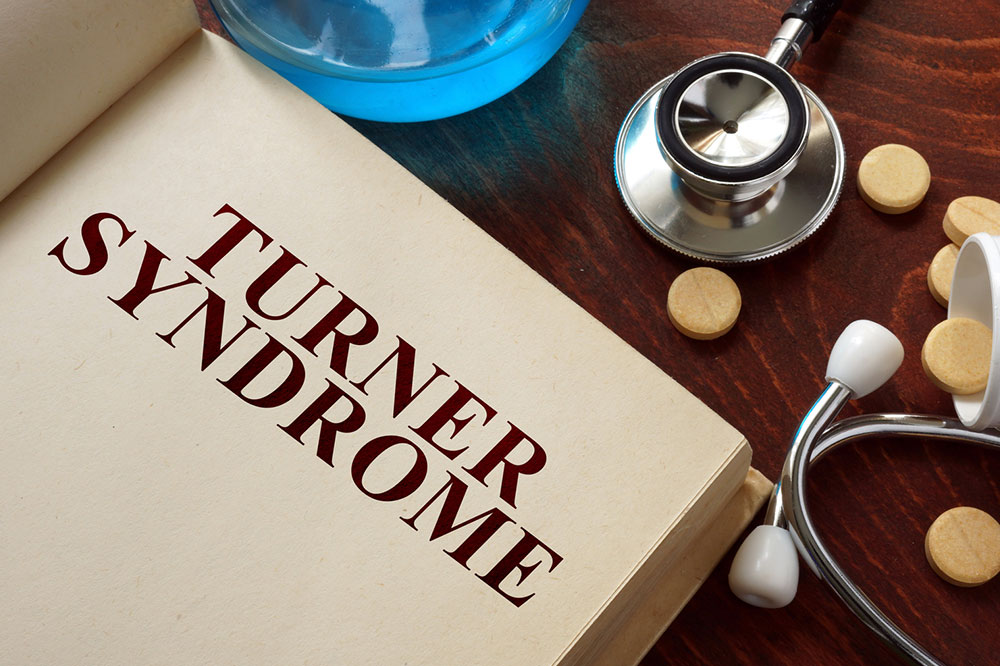Turner Syndrome – Causes, Symptoms, and Management
Turner syndrome is one of the common genetic disorders that exclusively affects females. Women usually have two X chromosomes in normal health conditions. However, women with Turner syndrome will have a defect or complete absence of one of these chromosomes. When properly addressing and diagnosing the causes, it is possible to successfully manage the condition and prevent further potential health complications. Keep reading to discover more about the condition and its management options.
What is Turner syndrome?
The genetic composition, including your DNA and genes, is stored on chromosomes. These chromosomes convey genetic information from one generation to another. Two sex chromosomes are among the 46 chromosomes that humans typically have.

A male has X and Y chromosomes, while a female has two X chromosomes. The second X chromosome in a female is known as the Barr body, and the abnormality or defect in the chromosome leads to Turner’s syndrome.
The disease is a genetic abnormality that is only seen in women. This condition makes a female infertile and unable to conceive. It also makes them susceptible to disorders like osteoporosis, hypothyroidism, autoimmune conditions, learning difficulties, heart problems, hearing and vision problems, hypertension, and more.
It is also referred to as congenital ovarian hypoplasia syndrome, monosomy X, gondola dysgenesis, and Bonnevie-Ullrich syndrome.
What causes Turner syndrome?
Turner’s syndrome occurs when you miss a chromosome in the 23 pairs. Once the egg is fertilized, the maternal and paternal genes receive half of the chromosome. When there is an absence, it will result in the syndrome.
The missing chromosome can happen due to various processes, while the exact causes of Turner syndrome are still unknown. Let us explore some of the common ways that induce the syndrome .
- Monosomy
A complete absence of the X chromosome that either occurs due to the error in the sperm of the father or the ovum of the mother. - Mosaicism
This disorder occurs when there is a defect in the cell division at the early stages of fetal growth in the womb. - X chromosome abnormalities
- Abnormalities in one of the X chromosomes happen due to the missing or non-functionality of the specific gene.
How to identify Turner syndrome?
Turner syndrome affects 1 in 2500 girls worldwide. Even before birth, when the infant is in the womb, a prenatal or cell-free DNA test can detect the disease with the following indications.
- Accumulation of excess fluid in the back of the neck regions
- Abnormal kidneys
- Heart anomalies
There are considerable differences in symptoms of the syndrome in childhood and over time. Below are some common symptoms.
Infancy and childhood
- Low-set ears
- Droopy eyelids appearance
- Low hairline
- Swollen feet and fingers
- Flat feet
- Thick or squat neck
- Receding jaw
- Small stature
- Growth retardation
- Narrow and inverted nails
- Arms that are in an outward position at the elbows
- High palate
- Slow growth
- Unusual broad chest
Adulthood
- Short stature and slow growth
- Delayed puberty
- Hypertension
- Recurrent infection in the ear
- Osteoporosis
- Scoliosis
- Horseshoe kidney
- Early cease of menstrual cycles
- Infertility
- Lack of sexual changes during the puberty period
What are the diagnostic procedures?
Turner’s syndrome can be investigated with the help of the following diagnostic procedures:
- Karyotyping
Karyotyping obtains a sample of the genetic materials of the infants. It can be compared with healthy genetic material to detect the presence of Turner syndrome. - Amniocentesis
It includes the extraction of a sample of the amniotic fluid where the infant rests in the womb. - Blood sample
In most cases, the blood sample from the mother can be potential evidence to ensure the child’s partially or completely missing the X chromosome. - Chorionic villus sampling
CVS collects the tissue sample from the placenta region to confirm the condition.
Treatment for Turner syndrome
Various Turner syndrome treatments minimize its effects, but no permanent cure exists. Females with the syndrome require constant and special attention, especially when they go through the adolescence stage.
Some of the effective Turner syndrome treatment approaches are:
Human growth hormone replacement therapy
Human growth hormone treatment is the primary approach for girls with the condition. This therapy will be started at the early age of 5 or 6 years so that the child can get the desired results.
Human growth hormones will help you to correct the issues related to height. The healthcare professional may offer a prescription plan to increase protein production and enhance bone mineral density.
Estrogen therapy
Most young girls with Turner syndrome have been suggested to begin with, estrogen therapy to induce puberty. It can be started as young as 11 and 12 years old. The treatment will help them enhance breast development and improve the size and health of the uterus. This treatment also helps females enhance their bone mineralization and height.
The therapy is generally prescribed to continue throughout life until they attain menopause. If a woman with Turner syndrome desires to have a child, they can opt for In Vitro fertilization (IVF) with donated eggs or embryos for a healthy pregnancy. At the same time, the health of the uterus is ensured by estrogen and hormone therapy.
There is no prevention for the condition due to genetic inheritance. Therefore, early diagnosis, treatment, and regular health check-ups are extremely important for women to lead a healthy, independent, and happy life with Turner syndrome. Once your physician has diagnosed Turner syndrome causes, they will suggest a timely and appropriate treatment to extend the life expectancy and improve the quality of life.


